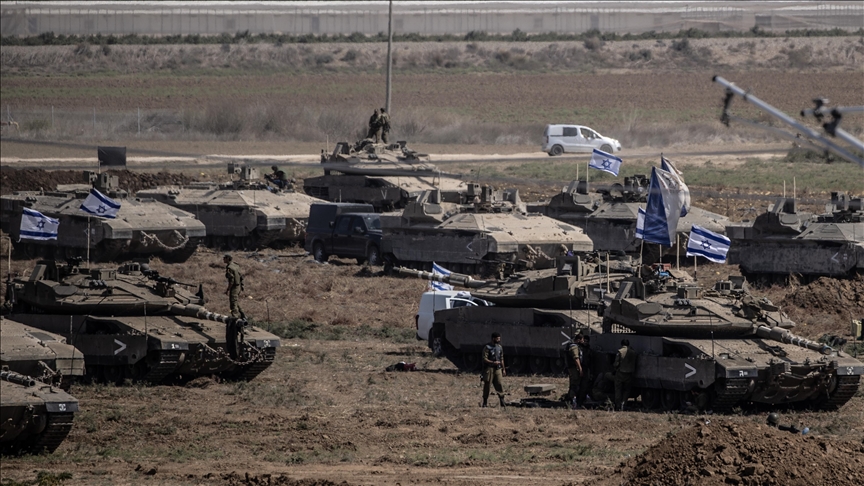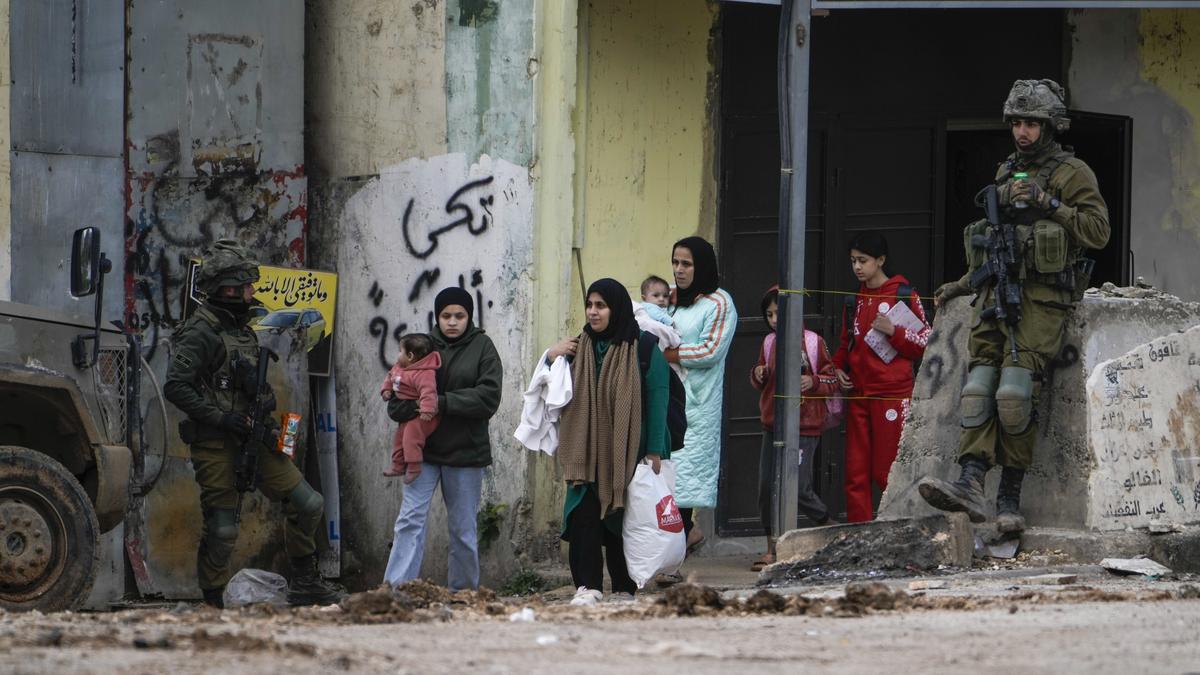Israeli Defense Minister Israel Katz announced Wednesday a major expansion of military operations in Gaza, involving the seizure of large areas of land that will be “incorporated into Israel’s security zones.”
Katz stated that the operation would also include a large-scale evacuation of Gaza’s population from combat zones, though he did not provide specific details. The military aims to “crush and clear” terrorist infrastructure while securing more land under Israeli control.
As part of this expansion, Israel’s military spokesperson for Arabic media ordered residents in Gaza’s southern Rafah area to evacuate and move north.
Reports from last month suggested that Israel was preparing for a massive ground offensive, possibly involving tens of thousands of troops to occupy large parts of Gaza. However, Katz did not confirm whether additional troops would be deployed in the latest expansion.
The announcement coincides with continued Israeli airstrikes across Gaza. Overnight bombings in the southern part of the enclave killed at least 17 people, including women and children, according to hospital sources in Khan Younis. Many of the victims had already been displaced from Rafah.
Israel resumed its offensive two weeks ago, breaking a ceasefire with Hamas that had lasted for two months. The country has vowed to maintain a military presence in parts of Gaza until the remaining 24 hostages believed to be alive are released.
Since the renewed fighting began, hundreds of Palestinians have been killed, and the UN has warned of rapidly depleting food supplies in the enclave.
Under the leadership of Lt. Gen. Eyal Zamir, Israel’s military has been strategizing for a large-scale operation that could see an extended occupation of Gaza. However, prolonged military action faces pushback from segments of the Israeli public, many of whom are demanding a hostage deal over continued warfare.
The families of Israeli hostages expressed outrage over the expanded operation, accusing the government of prioritizing combat over securing the safe return of their loved ones.
“Instead of negotiating a deal to bring the hostages home, the government is sending more soldiers into Gaza to fight in the same places again and again,” the families’ forum stated, demanding a clear explanation from Israeli leadership.
Meanwhile, Egypt and Qatar have been working to revive ceasefire talks. Hamas recently agreed to an Egyptian proposal that would see the release of five hostages, including American-Israeli citizen Edan Alexander, in exchange for a renewed truce. Israel has responded with a counteroffer, but negotiations remain ongoing.

Latest Developments
–Israeli Defense Minister Israel Katz took to X (formerly Twitter) to announce an expansion of military operations in Gaza, aiming to ramp up pressure on Hamas.
–He urged Gazans to evacuate and “remove Hamas” as the military intensified its offensive. Meanwhile, Hamas has agreed to a recent ceasefire proposal that includes the release of five hostages, but Israel countered the offer, bringing negotiations to another deadlock.
–In Rafah, residents are once again fleeing after the IDF issued new evacuation warnings. The military’s Arabic-language spokesperson, Col. Avichay Adraee, stated on social media that IDF forces are “returning to fight with great force to eliminate the capabilities of terrorist organizations in these areas.” He urged civilians to move immediately to shelters in Al Mawasi for their safety.
–Since dawn, Israeli strikes have killed at least 21 people across Gaza. This follows an earlier wave of bombings on Eid-ul-Fitr, in which nearly 70 people lost their lives as Israel resumed its air campaign.
How Israel’s Land Seizures Are Reshaping the Occupied West Bank
While much of the world’s focus remains on Israel’s war in Gaza, a quieter but equally significant transformation is taking place in the occupied West Bank. Israel is rapidly redrawing its borders, pushing ahead with a strategy that appears to pave the way for full annexation.
Just two days after a ceasefire took effect in Gaza on January 21, the Israeli military escalated its operations across the West Bank, particularly in the northern regions. Bulldozers have flattened entire neighborhoods, displacing at least 40,000 Palestinians. In a move not seen since the Second Intifada, Israel has also reintroduced tank incursions and airstrikes in the area.

The West Bank at a Glance
Located west of the Jordan River, the occupied West Bank, known as al-Daffah in Arabic, spans 5,655 sq km (2,183 sq miles). It is roughly 15 times larger than Gaza and about the same size as the U.S. state of Delaware.
Since Israel’s military occupation began in 1967, Palestinian life in the West Bank has been defined by severe restrictions. From military checkpoints and arbitrary arrests to home demolitions and land seizures, the Israeli government has systematically expanded illegal settlements while tightening control over Palestinian movement.
The West Bank is home to approximately 3.3 million Palestinians, spread across 11 governorates. Hebron (al-Khalil) is the most populous, with about 842,000 residents, followed by Jerusalem (500,000), Nablus (440,000), Ramallah and el-Bireh (377,000), and Jenin (360,000).
Meanwhile, around 700,000 Israelis now live in illegal settlements built on Palestinian land—an ever-growing presence that underscores the ongoing territorial shift.
Why Is the Northern West Bank Being Targeted?
Israel’s ongoing military offensive, dubbed Operation Iron Wall, has zeroed in on the northern West Bank, particularly the governorates of Jenin and Tulkarem.
Unlike other areas of the West Bank, these regions have relatively fewer Israeli settlements and have long been strongholds of Palestinian resistance – making their annexation historically challenging. To counter this, Israel has intensified its military operations, carrying out systematic raids and large-scale demolitions to suppress resistance and tighten control.
Refugee camps have been hit especially hard. Since October 2023, the Tulkarem refugee camp – the second-largest in the West Bank – has seen the destruction of 205 structures, including homes, businesses, and agricultural facilities. Nur Shams camp followed with 174 demolitions, while Jenin camp lost 144 structures, peaking in August 2024 when 37 structures were leveled in a single month.
Meanwhile, Israeli settlements continue to expand at an unprecedented pace. According to Peace Now, an Israeli NGO, 2024 has already seen a record-breaking 48 new settlement outposts in the West Bank. This follows a trend from 2023, when 31 new outposts were established – 21 of them appearing in just six months, even before the events of October 7.

Settler Violence
Beyond military operations, Israeli settlers have increasingly taken matters into their own hands, launching near-daily attacks on Palestinian communities, particularly in rural areas near settlement outposts. These settlers have blocked roads, destroyed water sources, and targeted Palestinian herding villages, forcing residents to flee.
In Khirbet Zanuta, a village in the southern West Bank, homes and water resources were razed, pushing residents out. In Nablus, eight Palestinian families – totaling 51 people – were forcibly displaced at gunpoint.
A report by Israeli human rights group Yesh Din, analyzing 1,664 police investigations into settler violence between 2005 and September 2023, found that –
–94% of cases were closed without indictment.
–Only 3% resulted in convictions.
–80% of investigations were dropped due to “lack of evidence” or failure to identify suspects.
This lack of accountability has fostered deep mistrust among Palestinians, with 58% of victims in 2023 choosing not to report crimes to Israeli authorities. Another human rights group, B’Tselem, describes settler violence as “Israel’s unofficial tool” for displacing Palestinians, enabled by a legal system that largely turns a blind eye.
Illegal Seizure of Palestinian Land
A June 2024 report by HaMoked, an Israeli human rights organization, reveals that Israel has significantly ramped up its control over the West Bank since October 2023, accelerating its path toward full annexation.
The scale of land appropriation has reached unprecedented levels. In 2024 alone, Israeli authorities classified 24,700 dunams (6,100 acres or 2,470 hectares) as “state land”—exceeding the 23,000 dunams annexed over the entire period from 2000 to 2023. Simultaneously, Israel formally recognized 68 illegal settlement outposts, providing them with infrastructure and further entrenching its control.
By transferring planning and demolition powers to his office, Smotrich has fast-tracked the forced displacement of Palestinians, collaborating with settlers to seize land, demolish homes, and legalize settlement outposts, tightening Israel’s grip on the territory.
According to the United Nations Relief and Works Agency (UNRWA), displacement in the West Bank has surged dramatically, with over 40,000 Palestinians forced from their homes—the largest wave of displacement since 1967. The scale of destruction and forced expulsion underscores a broader strategy: the systematic dismantling of Palestinian communities, as their presence poses a demographic challenge to Israel’s long-term ambitions.

A Unique Pattern in Jenin
Satellite imagery of Jenin reveals a new Israeli tactic not observed in Tulkarem: 14 earthen barriers have been constructed around the camp, with military vehicles positioned at key locations.
Meanwhile, movement restrictions across the West Bank have worsened. As of November 2024, the Israeli military had erected 793 checkpoints, with 60% concentrated in Hebron, Nablus, and Ramallah. These checkpoints severely hinder medical access, disrupt trade, and isolate Palestinian communities.
Open Calls for Annexation and Displacement
Despite rapid settlement expansion, Israel faces a key demographic challenge – Palestinian birth rates across the West Bank, Gaza, and Israel remain higher than those of Israeli settlers. Although the population numbers are now roughly equal, Israel’s policy efforts are increasingly geared toward reducing the Palestinian presence in strategically significant areas.
Meir Masri, a professor of geopolitics at Hebrew University, posted on social media that annexing the West Bank is “the greatest Zionist achievement since 1967” and must not be missed.
In sharp contrast, a 2025–2026 policy paper from the Israeli Institute for National Security Studies (INSS) warns that unilateral annexation would:
–Further isolate Israel on the global stage.
–Push Israel into a one-state reality, where Jews risk becoming a minority.
–Contradict core Zionist ideology, which seeks to maintain a Jewish-majority state.
While some Israeli officials push for aggressive annexation, others recognize that it could fundamentally reshape Israel’s political and demographic future, with consequences that extend far beyond the West Bank.

